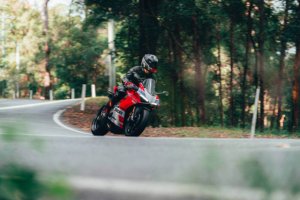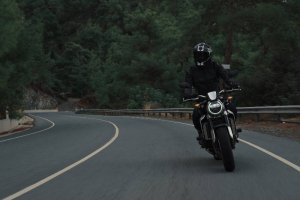Brachial Plexus Injury

Contact
Table of Contents
In my career I have worked for the two biggest motorcycle insurance brokers in the UK and assisted their policyholders with personal injury claims. Brachial plexus injuries are one of the most serious injuries motorcyclists can suffer after being thrown off of their bikes as a result of a collision or being physically hit by a car.
What is a brachial plexus injury?
A brachial plexus injury is a devastating life-changing injury that should only be dealt with by an experienced catastrophic injury lawyer. Essentially the nerves attached to the spine which control the movement of the arms are completely or partially severed or stretched. This often results in a “flaccid” arm with no usable function or limited function but this is also often accompanied by the most severe form of pain known as “neuropathic pain”.
There will be an underlying level of pain but also spikes in severity when the pain goes beyond the normal 10/10 scale on the scoring system used known as VAS (Visual Analogue Scale). Clients have often described the pain as a vice-like crushing type of pain sometimes with accompanying pain like the arm is being burnt or set on fire. This is often called breakthrough pain which stops the person in their tracks and doubles them up in agony for what can be several minutes.
Brachial plexus injury treatment
Dealing with such an injury in a claim is complex and you will need to obtain reports from specialist peripheral nerve surgeons and pain specialists. Every BPI sufferer is different and has their own individual symptoms.
Some will attempt nerve/muscle transfers such as from the “free gracilis” in the leg into the arm to try and restore some movement at the elbow. There are also “lattisimus dorsi” transfers to the spinal accessory nerve.
Other surgical options include brain surgery called “Drez lesioning” (“Dorsal root entry zone lesioning”). This is where a neurosurgeon will enter the spinal cord and attempt to “silence” the damaged areas of pain-signalling nerve cells. This is often viewed as a last resort. Again success rates are variable.
Others elect for amputation to remove the arm and the weight of a “dead” arm but there is no guarantee that this will assist with the pain.
Latest developments in treatment of brachial plexus injuries
In Austria, Professor Oskar Aszmann is carrying out pioneering surgery with patients with brachial plexus injuries whereby he amputates part of the arm and then carries our muscle transfers to restore some function and then trains the patient in the use of TMR (Targeted Muscle Re-innervation) to allow myoelectric prostheses to be used.
It is thought that restoring some function even if limited can help the neuropathic pain condition.
High frequency spinal cord stimulators are also now being used to try and help the pain side of things although the data on their effectiveness is not fully in yet.
Recently an upper arm orthosis called the “Myopro” has come on to the market in the UK . This is a device which straps on the arm and controls the movement. An electric signal, however, small, is needed to control the orthosis” and then the user has to undergo a period of training to use it. This could be very beneficial for those clients with brachial plexus injuries without the severe neuropathic pain element.
They should trial the use of one of these devices to see if it helps restore some function. Case Managers need to be aware of it and how to refer on to a trial. The fitting can be carried out by Dorset Orthopaedic and training in its use by Hobbs Rehabilitation.
Appropriate expert reports should set out the capital costs, service and maintenance, battery packs and insurance on a replacement cycle so that the future costs of such a device can be included in the claim.
Making a claim for a Brachial Plexus Injury
Has a motorcycle accident left you with a brachial plexus injury?
We understand the devastating impact of brachial plexus injuries. Our team has helped countless motorcyclists navigate the complexities of these claims. You deserve expert legal support. We have the experience and knowledge to fight for your rights and ensure you receive the compensation you need to move forward. Take the first step towards recovery. Contact us today for a free consultation to discuss your options.
To speak with one of our personal injury solicitors:
- Fill in our online enquiry form; or
- Call us on 020 7485 8811
Share this article
Contact us today
Call us 020 7485 8811
Email us Send us an email and we’ll get back to you
Related InsightsVIEW ALL
- 18.1.2023
Motorcyclist receives £3 million in settlement
Collision leads to life changing injuries Kate Milton, a Senior Associate at Osbornes Law settled a claim for a 27-year-old...
Read more - 6.10.2021
Multi-Million Settlement After Motorbike Accident
£5m settlement for injured motorcyclist Our lawyers achieved a £5m settlement for a 54-year-old man following a motorbike accident. As...
Read more - 9.8.2021
Motorcycle Accident Case Settles for £400,000
The accident causes serious injuries Mr C, an Italian man working in a 5 star London hotel was riding a moped...
Read more - 9.8.2021
Motorcycle accident case settles for £90,000
Our client’s journey from devastating accident to settlement Mr H was a hard-working security operative. He and his wife...
Read more - 21.9.2020
Motorcyclists – Could your actions be invalidating your insurance?
Insurance cover for you and your bike is vital in the event of an accident or theft but beware – insurance...
Read more - 2.9.2020
Motorbike accident results in multiple Injuries
Blanca Diego, Personal Injury solicitor at Osbornes Law, settled a claim for a 30-year-old motorcyclist who was involved in a...
Read more






